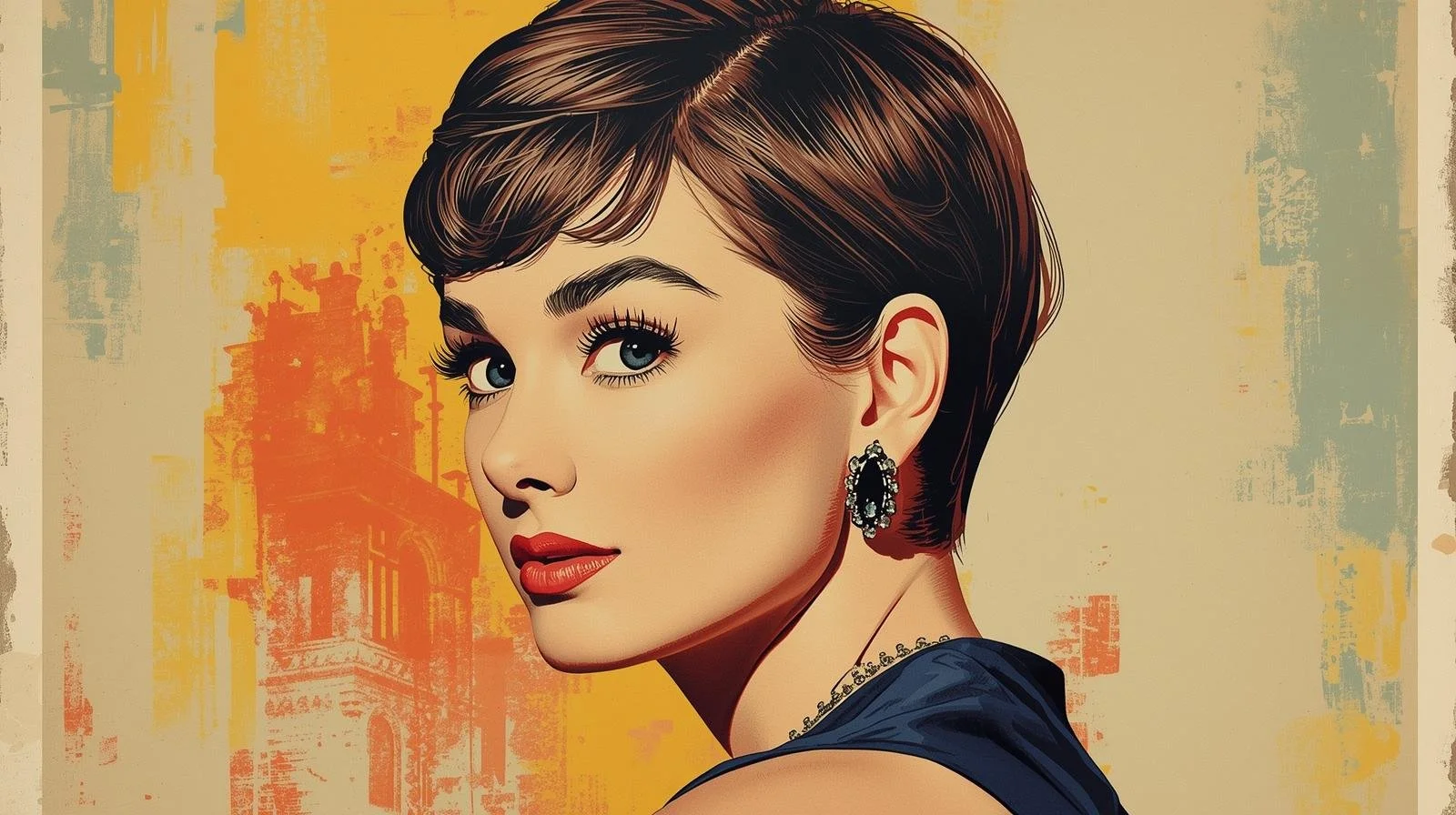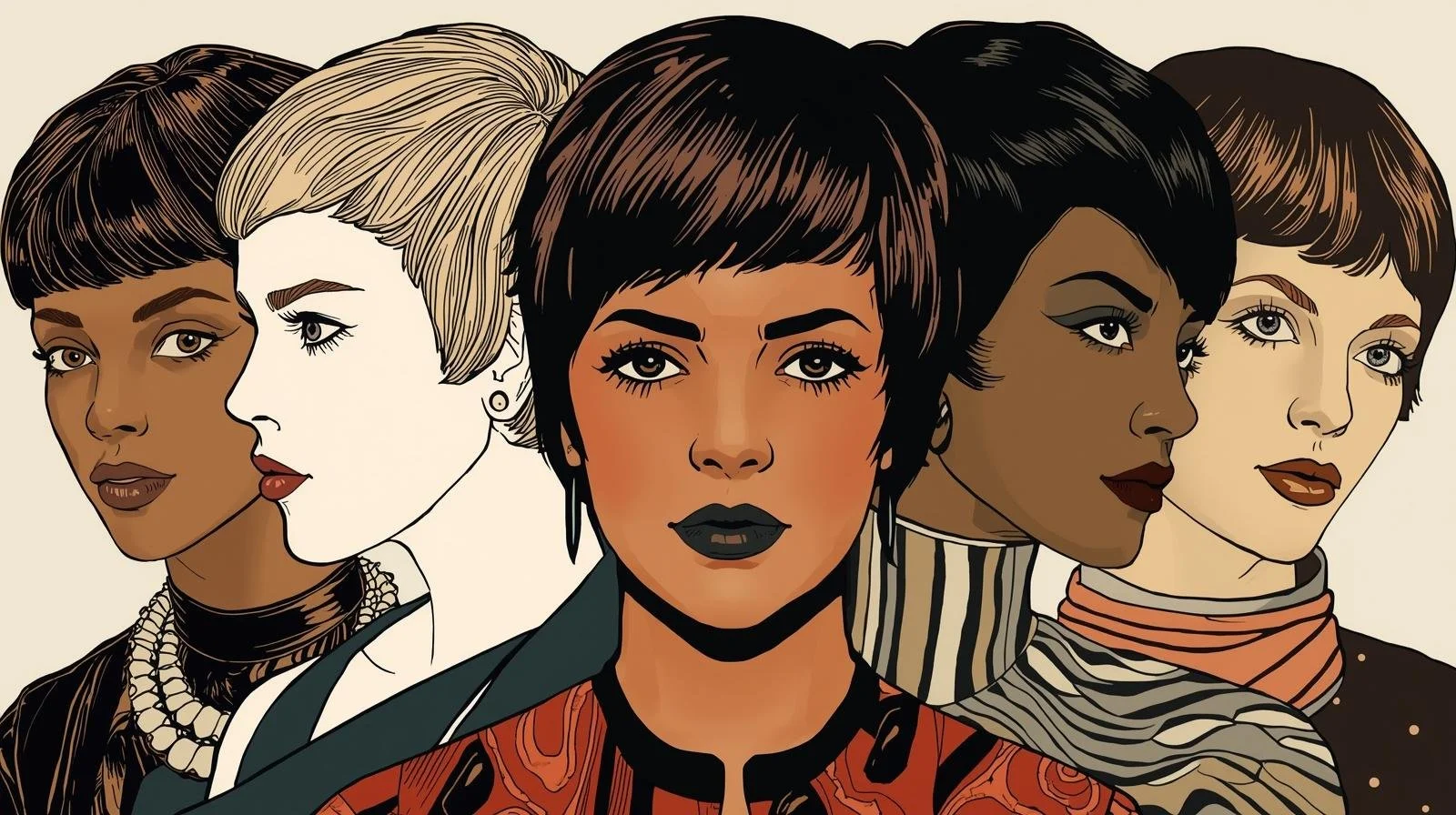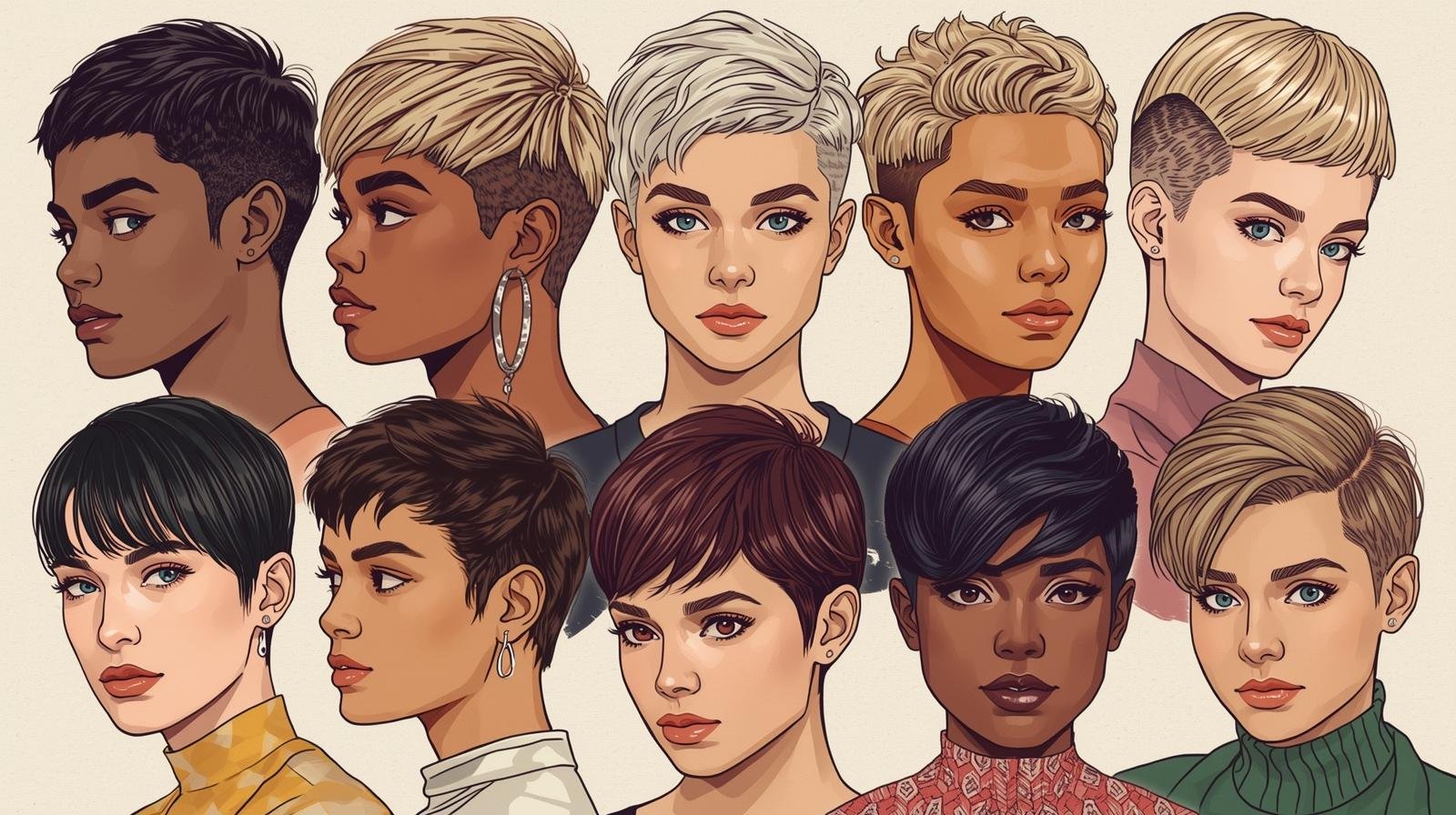Origins in the Early 20th Century
The pixie cut traces its roots back to the 1920s, during the flapper era. Women began embracing shorter hairstyles as a symbol of independence and modernity, breaking away from traditional long locks. While the bob dominated this period, the pixie cut emerged as an even bolder statement of liberation.
1950s: Audrey Hepburn’s Influence
The pixie cut gained global recognition in the 1950s when Audrey Hepburn sported the look in Roman Holiday. Her chic, cropped style became synonymous with elegance and sophistication, inspiring countless women to adopt the trend.
1960s: The Mod Movement
In the 1960s, the pixie cut became a fashion staple thanks to icons like Twiggy and Mia Farrow. This era celebrated sharp, geometric shapes and minimalist aesthetics, making the pixie cut a perfect fit for the mod culture.
1970s–1980s: Edgy and Experimental
The following decades saw the pixie evolve into edgier versions, often paired with bold colors and asymmetrical cuts. Celebrities and musicians embraced the style as a symbol of rebellion and individuality.
1990s–2000s: Mainstream Revival
Stars like Halle Berry and Winona Ryder brought the pixie back into mainstream fashion during the 1990s. The cut became a versatile option, balancing femininity with a modern, confident edge.
Today: Timeless and Trendy
The pixie cut remains a timeless choice, celebrated for its low maintenance and ability to highlight facial features. Modern variations include textured pixies, undercut pixies, and longer fringe styles, offering endless customization.





